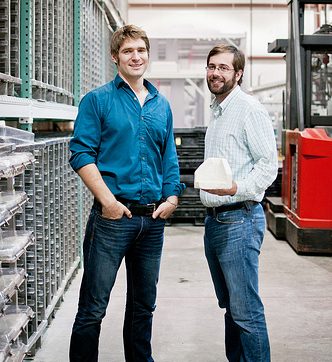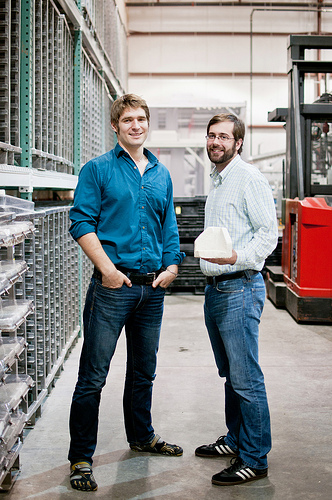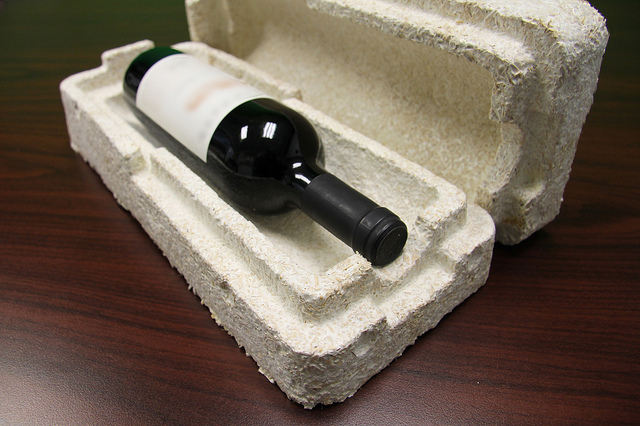“Imagine what our planet might look like in a thousand years.”
That is the first question Eben Bayer asked the audience in his 2010 TED talk, “Are mushrooms the new plastic?” My mind immediately jumped to the first scenes of the Disney Pixar movie, Wall-E. In the movie, the robot Wall-E has been placed on an abandoned Planet Earth with the futile task of cleaning-up an insurmountable mountain of trash and waste. While this concept is a bit extreme, the movie sends a clear message: We need to better manage our waste.
Eben Bayer also recognizes the need to find better solutions for our waste. While attending Rensselaer Polytechnic Institute, Eben and his classmate Gavin McIntyre invented an alternative use of fungi that produces rigid materials. This material is based on mycelium, which is defined as “the vegetative part of a fungus, consisting of a mass of branching, threadlike hyphae.” It is a living, growing and self-assembling organism.
Pictured: Eben Bayer and Gavin McIntyre
Eben and Gavin’s product, MycoBond, is a mycelium “glue” that converts agriwaste into a foam-like material. This material provides an alternative solution for waste by fitting into nature’s recycling system. With the encouragement of their professor, the two men realized they were on to something and founded their company, Ecovative.
Ecovative initially focused its research on rigid boards for building insulation, and has since expanded into packaging. The manufacturing process for this company lies in the organism. Waste products are molded into a form and injected with the mycelium. Over the next few days, the fungi digests and assembles the waste into biocomposites. The biocomposites can be molded into any form and given various properties, such as being mold resistant, insulating, vapor resistant, etc.
Eben states that there are three key principles for the success of these new “Mushroom Materials.” The first principle is open feedstocks. This process does not depend on finite resources, such as petroleum, that we so heavily rely on to power our cars and heat our homes. This process relies on local agricultural byproduct, which is naturally occurring and treated as a waste product.
The second key principle of this material is the consumption of far less energy in creating the material. The beauty in the “manufacturing” of this material is that the fungi manufactures itself over time.
The third key principle is the ability to create materials that fit into nature’s recycling system. This product is made from a mixture of agricultural waste and fungi, two naturally occurring materials. At the end of the product use, it can be broken down and recycled into the next usable form without having to go to a recycling/processing facility.
Ever since the company started, its Mushroom Materials products have been rapidly expanding. Ecovative began using MycoBond to create packaging products for Fortune 500 companies. They have received the Environmental Protection Agency’s Environmental Quality Award, among others. The material is Cradle-to-Cradle Certified Gold, and MycoBond is being used for a wide variety of applications, from building insulation to surfboards. Eben Bayer and Gavin McIntyre have created an innovative material that transforms the life cycle of a product. If Ecovative is able to replace more plastic products with their biodegradable and environmentally friendly alternative, perhaps Wall-E will have a sequel set on a green and flourishing Planet Earth where his main mission is to harvest more mushrooms.






